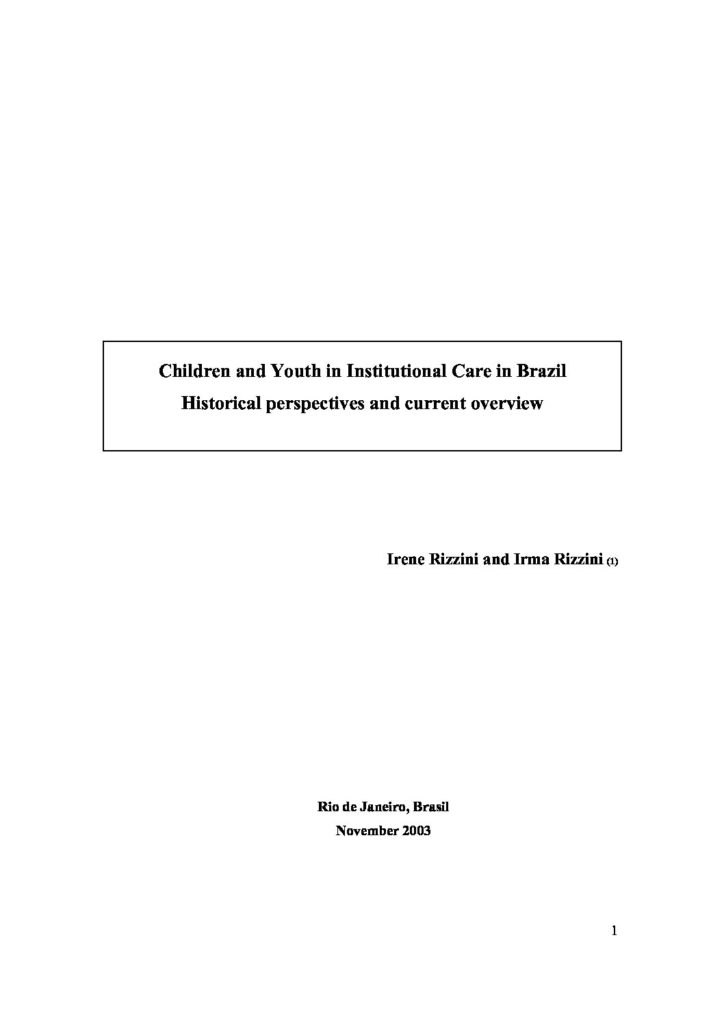
Children and youth in institutional care in Brazil: Historical perspectives and current overview
Downloads
Summary
This chapter discusses the institutionalization of children and adolescents in Brazil and places current debates about institutional care in a historical context. The institutional care of children is deeply rooted in the Brazilian governmental and religious response to needy children. Up to the mid-twentieth century some of the Brazilian elite also sent their children to boarding schools to train them to take their place among the next generation of the elite (2). But the modal use of institutions has been for children who were orphaned, abandoned, or delinquent or whose parents could not or would not take care of them. A major formal shift in attitudes to institutional care occurred in 1990 with the passage of the Statute of the Child and Adolescent (Law 8.069, July 13, 1990) – a law that articulated the fundamental rights children and youth should enjoy. The section of that law on children and youth in special circumstances redefines institutional care as shelter care and describes shelter care as care that should be temporary and that should be structured in ways to maintain children’s connections to their community and family of origin. In contrast, the deliberate isolation of the 19th century institution, which survived deep into the last century, was regarded as a desirable characteristic either because it shielded the child from bad influences and permitted the supposedly good influences of the institution the maximum chance to shape that child, or because it protected society against “dangerous” children.
Discussion
Users can discuss this report and make suggestions for future updates. You must be signed in to submit a comment.
No comments
Join the conversation and
Become a Member Existing member loginbecome a member.